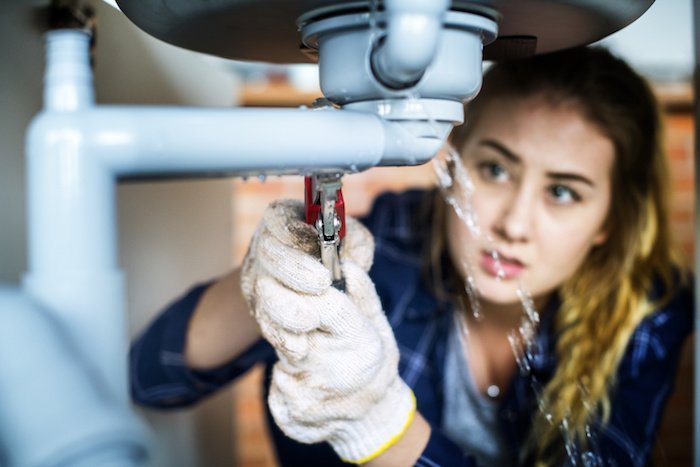Everybody seems to have their private idea involving When to Call a Plumber? DIY or Professional Help.

Introduction
Pipes issues can vary from small inconveniences to major frustrations, frequently motivating home owners to make a decision between taking on the trouble themselves or employing a specialist plumbing professional. Understanding when to do it yourself and when to seek professional aid can save time, money, and avoid possible catastrophes. This article discovers the aspects to consider when making this critical choice.
Benefits of Do It Yourself Pipes
Taking on plumbing tasks yourself can be fulfilling in several ways, particularly for easier tasks.
Price Savings
Do it yourself pipes jobs commonly conserve cash by staying clear of expert service fees. Tasks like fixing small leaks, replacing taps, or installing brand-new showerheads are examples where home owners can handle repairs without working with a plumbing professional.
Skill Enhancement
Taking part in do it yourself pipes supplies a possibility to find out and boost sensible abilities. Standard jobs equip home owners to comprehend their plumbing systems far better and gain self-confidence in handling tiny fixings separately.
Risks of DIY Plumbing
While DIY jobs offer benefits, certain threats must be very carefully considered before trying repair work.
Complexity of Tasks
Some pipes concerns require specialized understanding and tools past regular property owner abilities. Mishandling complicated issues can bring about more damages and costly repairs.
Security Concerns
Working with plumbing systems entails dangers such as exposure to water damage, capacity for electrical risks, and taking care of tools inaccurately. Safety and security safety measures have to be observed to avoid accidents and guarantee effective repair services.
Indicators to Call an Expert Plumber
Acknowledging when a pipes issue exceeds do it yourself capacities is important to preventing aggravating problems.
Signs of Complex Issues
Examples include:
Trigger specialist intervention is essential to deal with these issues properly and lessen damage.
Do It Yourself Pipes Tips
For successful DIY plumbing, it's important to be prepared with the right devices and follow proper procedures.
Basic Tools and Materials
Key devices for do it yourself pipes:
Step-by-Step Guides
Clear instructions ensure safe and reliable DIY repairs:
Choosing the Right Time to DIY
Determining when to take on pipes tasks yourself requires assessing both the complexity of the problem and personal convenience degrees.
Assessment Checklist
Consider:
When to Definitely Call a Specialist
Certain situations require prompt expert interest to avoid substantial damages or security dangers.
Instances include:
Finding and Employing a Professional Plumbing Technician
Selecting a certified plumber makes certain reliable service and peace of mind in fixing pipes concerns.
Criteria for Selection
Elements to think about:
Cost Evaluation: do it yourself vs. Expert Providers
Comparing the financial ramifications of DIY efforts versus specialist plumbing services helps in making educated decisions.
Financial Considerations
Examine:
Final thought
Choosing whether to DIY or call a specialist plumber depends upon recognizing the intricacy of pipes problems and individual capabilities. By considering the benefits and risks, house owners can make enlightened selections that advertise reliable maintenance and safeguard their homes from plumbing calamities.
DIY vs. Professional Plumbing Repairs: When to Call a Pro
When dealing with plumbing issues or embarking on renovation projects, homeowners have to decide whether or not they want professional help with their home’s plumbing system. While master plumbers can complete just about any plumbing project, they can cost a pretty penny. On the other hand, DIY plumbing projects can very quickly go awry, which can make things worse.
In this blog, we’ll explore common plumbing projects that homeowners can confidently tackle, provide insights into the essential tools needed, and discuss critical DIY mistakes to avoid. Understanding these distinctions not only helps in maintaining the efficiency and longevity of your home’s plumbing system but also ensures safety and cost-effectiveness in your repair endeavors.
Installing/Replacing Certain Plumbing Fixtures
Most homeowners should be able to install new plumbing fixtures or replace old ones that are damaged or old. Using basic tools, you should be able to effectively:
Replace faucet washers or cartridges Replace showerheads Install a new toilet seat Hook up new appliances Replace hose bibbs Unclogging Drains
You should also be able to fix any clogged drains within your home by using a plunger, plumber’s snake, or natural solutions like baking soda and vinegar. These can often clear clogged sinks or bathtubs without needing professional drain cleaning assistance.
Fixing Running Toilets
Another plumbing issue many homeowners may be able to handle is a running toilet. Toilets may run more than they should due to a faulty flapper or float inside the tank. Toilet replacement parts are easy to find and often come with easy-to-follow instructions.
Repairing Leaky Faucets
A dripping faucet can not only be an annoyance, but it can also be a waste of water. Leaky faucets can normally be fixed with basic tools and a basic understanding of how they work, making them easy to fix.
Adjusting Water Heater Temperature
If you are able to follow basic safety precautions, you should be able to adjust the temperature on your hot water heater, which can improve your home’s energy efficiency and also increase comfort.
Fixing Minor Leaks in Pipes
For small plumbing leaks, particularly ones at pipe joints, using plumbing tape or a patch kit can be a temporary fix while you decide on a more permanent solution. Repairing broken pipes, however, can be more difficult and may require professional attention.

We were brought to that editorial about through a friend on our other web blog. Liked our review? Please share it. Help somebody else discover it. Many thanks for taking the time to read it.
Appointment